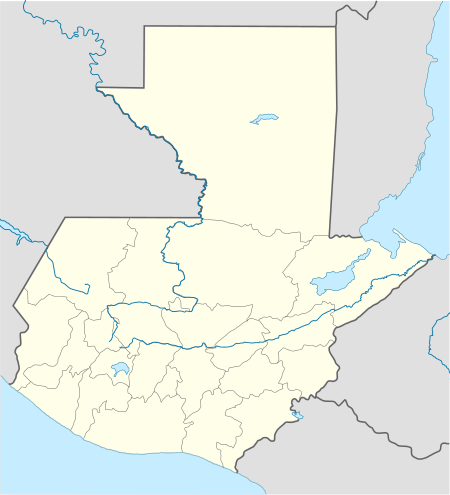Santiago Atitlán
Santiago Atitlán (Spanish pronunciation: [sanˈtjaɣo atiˈtlan], from Nahuatl atitlan, "at the water", in Tz'utujil Tz'ikin Jaay, "birdhouse")[2] is a municipality in the Sololá department of Guatemala. The town is situated on Lake Atitlán, which has an elevation of 5,105 feet (1,556 m). The town sits on a bay of Lake Atitlán between two volcanoes. Volcán San Pedro rises to 2,846 metres (9,337 ft) west of the town and Volcan Toliman rises to 3,144 metres (10,315 ft) southeast of the town. Volcán Atitlán, with an elevation of 3,516 metres (11,535 ft), is south-southeast of the town.[1] Santiago Atitlan is southwest of Panajachel across the lake.[1] Major highways reach Lake Atitlán at San Lucas Toliman and Panajachel. A road links Santiago to San Lucas Tolliman. Boats connect the numerous communities around the lake.
Santiago Atitlán Tz'ikin Jaay | |
|---|---|
City | |
Santiago (on right) and Lake Atitlán from Volcan San Pedro | |
 Santiago Atitlán Location in Guatemala | |
| Coordinates: 14°38′N 91°14′W | |
| Country | |
| Department | |
| Elevation | 1,567 m (5,141 ft) |
| Highest elevation | 3,516 m (11,535 ft) |
| Lowest elevation | 1,562 m (5,125 ft) |
| Time zone | UTC-6 (Central Time) |
| Country calling code | 502 |
| Climate | Aw |
The majority of the residents are indigenous Mayans. It was the capital of the Tz'utujil people in pre-Columbian times and its name was Chuitinamit.
Santiago Atitlán is the home of the Cojolya Weaving Center and Museum, founded by the Cojolya Association of Maya Women Weavers. The museum shows the history, tradition, and process of backstrap-loom weaving, the evolution of the traditional costume of the Tzutujil, and tells about the indigenous people of Santiago Atitlán.
Santiago Atitlán was the site of considerable state-sponsored violence during the country's civil war. Some of the most notable incidents that occurred during the war include the assassination of Roman Catholic priest Stanley Rother by right-wing death squads on 28 July 1981,[3] and the massacre of 14 people (and wounding of 21 others) when the Guatemalan Army opened fire on a crowd of unarmed civilians on 2 December 1990.[4]
References
- Google Earth
- Tz'unun Ya'?, tzununya.com
- Father Stanley Rother Oklahoma missionary murdered in Guatemala Archived 2007-07-04 at the Wayback Machine
- "Cultural Survival Quarterly". Cultural Survival.
External links

- Cojolya Weaving Center and Museum